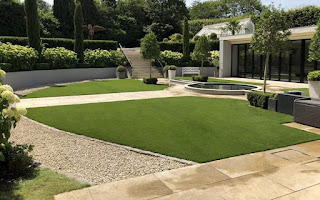The Surging Popularity and Increasing Trend of Artificial Turf
In recent years, artificial turf, also referred to as synthetic grass or faux grass, has experienced a remarkable surge in popularity and has emerged as a burgeoning trend across different domains. Let's explore the factors contributing to its increasing favor among people.
An inherent advantage of artificial turf lies in its low-maintenance nature, setting it apart from natural grass. By eliminating the need for mowing, watering, fertilizing, and weeding, it proves to be a cost-effective and time-saving choice for homeowners, sports venues, and public areas alike.
Distinguished by its durability and impressive longevity, artificial turf is engineered to withstand heavy usage, harsh weather elements, and intensive foot traffic without succumbing to wear and tear. This exceptional resilience renders it a prime selection for sports fields, playgrounds, and areas with high pedestrian activity.
Unwavering in its visual appeal, artificial turf retains a vibrant green appearance all year round, unaffected by weather fluctuations or seasonal shifts. Unlike natural grass that may fade or turn brown during droughts or colder months, this steadfast consistency enhances the beauty of landscapes and sports fields, ensuring an attractive and impeccably-maintained outlook.
In response to mounting apprehensions regarding water scarcity and the imperative for conservation, artificial turf presents a water-efficient solution. Unlike natural grass, it abstains from the need for regular watering, effectively curbing water consumption, especially in dry and arid locales. Embracing artificial turf proves to be an eco-conscious choice for regions grappling with water restrictions, contributing to a more sustainable environment.
Boasting remarkable versatility, artificial turf finds its way into an array of locations and settings, including residential lawns, sports fields, golf courses, rooftop gardens, schools, and commercial spaces. This wide-ranging adaptability solidifies its status as a preferred option across diverse applications.
Through progressive technological and design innovations, artificial turf has witnessed substantial improvements. Contemporary synthetic grass closely emulates the appearance and texture of natural grass, exhibiting enhanced softness and authentic color variations. The latest strides in synthetic turf technology render it increasingly lifelike and visually appealing, bridging the gap between artificial and natural surfaces.
Nevertheless, it is important to acknowledge that artificial turf comes with certain considerations. It has the potential to become hot when exposed to direct sunlight, may offer fewer environmental benefits in comparison to natural grass, and necessitates periodic maintenance to ensure cleanliness and optimal condition.
All in all, the surging popularity of artificial turf can be attributed to its low maintenance demands, enduring durability, unwavering appearance, water-conserving advantages, remarkable versatility, and constant technological progress. These key factors have propelled its widespread adoption across diverse applications, cementing it as the preferred choice for individuals, organizations, and industries alike.




Comments
Post a Comment